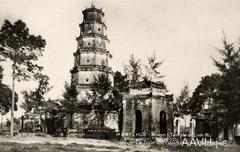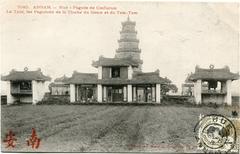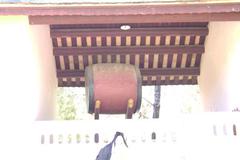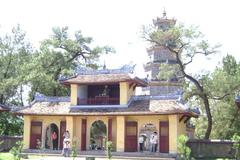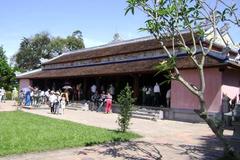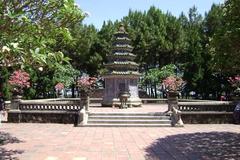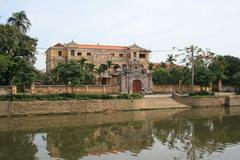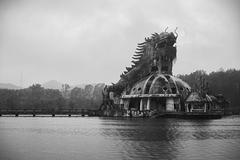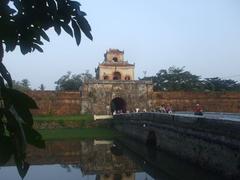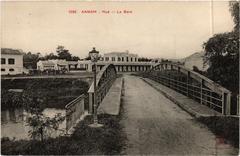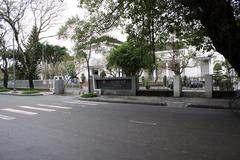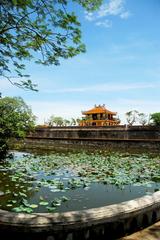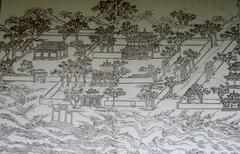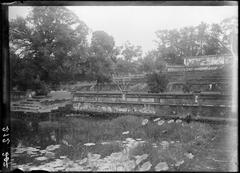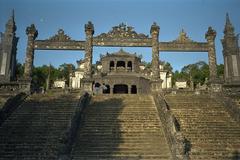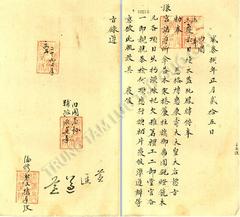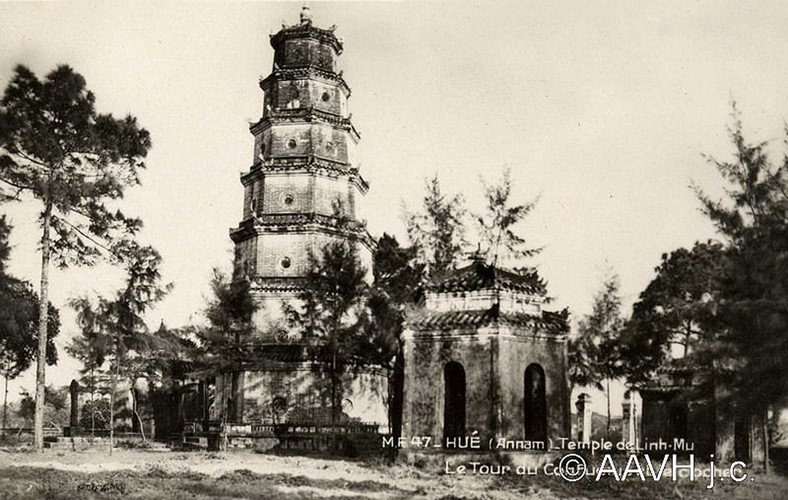
Visiting Chùa Thiên Mụ: History, Tips, and Visitor Information
Date: 17/07/2024
Introduction
Table of Contents
- Introduction
- The Legend of the ‘Heavenly Lady’
- Royal Patronage and Expansion
- Architectural Marvels and Spiritual Treasures
- A Symbol of Resilience and Resistance
- Practical Visitor Information
- Special Events and Guided Tours
- Photographic Spots
- A Place of Tranquility and Reflection
- Conclusion
- FAQ
The Legend of the ‘Heavenly Lady’
The pagoda’s origins are steeped in local lore. Legend has it that in the early 17th century, Lord Nguyễn Hoàng, the ruler of Southern Vietnam, encountered an elderly woman dressed in red and blue while surveying the area. She prophesied the rise of a powerful lord who would build a magnificent pagoda on that very spot for the prosperity of the land.
True to the prophecy, Lord Nguyễn Hoàng ordered the construction of a modest temple on the hill in 1601, initially named “Thiên Mụ Sơn” (Mountain of the Heavenly Lady) in honor of the mysterious figure. This event marked the beginning of Chùa Thiên Mụ’s long and illustrious history.
Royal Patronage and Expansion
Over the centuries, Chùa Thiên Mụ benefited from the patronage of the Nguyễn Dynasty, which ruled Vietnam from 1802 to 1945. Successive emperors recognized the pagoda’s spiritual significance and contributed to its expansion and renovation.
Lord Nguyễn Phúc Chu
In 1665, Lord Nguyễn Phúc Chu, the ruler of Đàng Trong (Southern Vietnam), commissioned a significant expansion of the pagoda, adding new halls and structures.
Emperor Thiệu Trị
In the 19th century, Emperor Thiệu Trị, a devout Buddhist, oversaw further renovations, adding exquisite bronze bells and ornate decorations.
These royal contributions transformed Chùa Thiên Mụ from a modest temple into a sprawling complex of religious buildings, solidifying its status as one of Vietnam’s most important Buddhist sites.
Architectural Marvels and Spiritual Treasures
Chùa Thiên Mụ’s architectural grandeur is a sight to behold. The pagoda complex, enclosed within fortified walls, features a harmonious blend of traditional Vietnamese and Buddhist architectural styles.
Phước Duyên Tower
The most iconic structure is the seven-tiered Phước Duyên Tower, standing tall at 21 meters. Each tier is dedicated to a different Buddha, and the tower serves as a symbol of the pagoda’s prominence.
Đại Hùng Hall
The main hall, Đại Hùng Hall, houses impressive statues of Buddha, including a magnificent bronze statue of the Maitreya Buddha.
Pavilion of the Stele
The pagoda also features a pavilion housing a giant marble stele, erected in 1715, which chronicles the history of Chùa Thiên Mụ and the contributions of the Nguyễn Lords.
Beyond its architectural marvels, Chùa Thiên Mụ safeguards precious spiritual artifacts, including ancient scriptures, intricate carvings, and a revered bronze bell cast in 1710. These treasures offer a glimpse into the pagoda’s rich spiritual heritage and its enduring importance in Vietnamese Buddhism.
A Symbol of Resilience and Resistance
Throughout its history, Chùa Thiên Mụ has been more than just a place of worship; it has also been a symbol of resilience and resistance during turbulent times.
Political Upheavals
During periods of political upheaval and conflict, the pagoda served as a refuge for those seeking solace and protection.
Buddhist Crisis of 1963
In the 20th century, Chùa Thiên Mụ played a pivotal role in the Buddhist crisis of 1963, a period of intense religious and political tension in South Vietnam. The pagoda’s abbot, Thích Trí Quang, emerged as a prominent leader of the Buddhist protest movement against the discriminatory policies of the Ngô Đình Diệm regime.
Chùa Thiên Mụ’s association with these historical events has further cemented its place in the hearts and minds of the Vietnamese people, representing not only spiritual devotion but also the ongoing struggle for freedom and justice.
Practical Visitor Information
For those planning a visit to Chùa Thiên Mụ, here are some useful details:
Visiting Hours
The pagoda is open daily from 8:00 AM to 5:00 PM.
Tickets
Admission is free, but donations are appreciated to help with the maintenance of the site.
Accessibility
The pagoda is accessible by road and river. Many visitors opt for a boat ride along the Perfume River, which offers scenic views of Huế.
Travel Tips
- Wear comfortable shoes, as there is a fair amount of walking involved.
- Respect the dress code by wearing modest clothing, covering shoulders and knees.
Nearby Attractions
After visiting Chùa Thiên Mụ, consider exploring other Huế historical sites such as the Imperial City, Tomb of Khai Dinh, and Minh Mang Tomb.
Special Events and Guided Tours
Chùa Thiên Mụ often hosts special events and festivals, especially during Buddhist holidays. Check the local calendar for events such as Vesak Day and Vu Lan Festival. Guided tours are available and recommended for those who want a deeper understanding of the site’s history and significance.
Photographic Spots
The pagoda offers numerous photographic opportunities. Popular spots include the Phước Duyên Tower, the main gate, and the serene gardens. Early morning or late afternoon visits provide the best lighting for photography.
A Place of Tranquility and Reflection
Today, Chùa Thiên Mụ remains an active place of worship and a popular destination for both pilgrims and tourists. Visitors from all walks of life come to admire its architectural beauty, pay their respects, and experience the serene atmosphere that pervades the complex.
The pagoda’s tranquil gardens, adorned with lotus ponds and bonsai trees, offer a sanctuary from the bustling city, inviting contemplation and reflection. As you wander through the grounds, listening to the gentle chanting of monks and the soft chime of bells, you can’t help but feel a sense of peace and serenity wash over you.
Conclusion
Chùa Thiên Mụ stands as a testament to the enduring power of faith, history, and culture. Its story, spanning centuries, is etched into the very fabric of Huế, making it an unmissable destination for anyone seeking to connect with the soul of Vietnam.
FAQ
What are the visiting hours for Chùa Thiên Mụ?
- The pagoda is open daily from 8:00 AM to 5:00 PM.
Is there an admission fee to visit Chùa Thiên Mụ?
- Admission is free, but donations are appreciated.
How can I get to Chùa Thiên Mụ?
- The pagoda is accessible by road and river, with many visitors opting for a boat ride along the Perfume River.
What should I wear when visiting Chùa Thiên Mụ?
- Wear modest clothing that covers your shoulders and knees.
Are there guided tours available?
- Yes, guided tours are available and recommended for a deeper understanding of the site.
